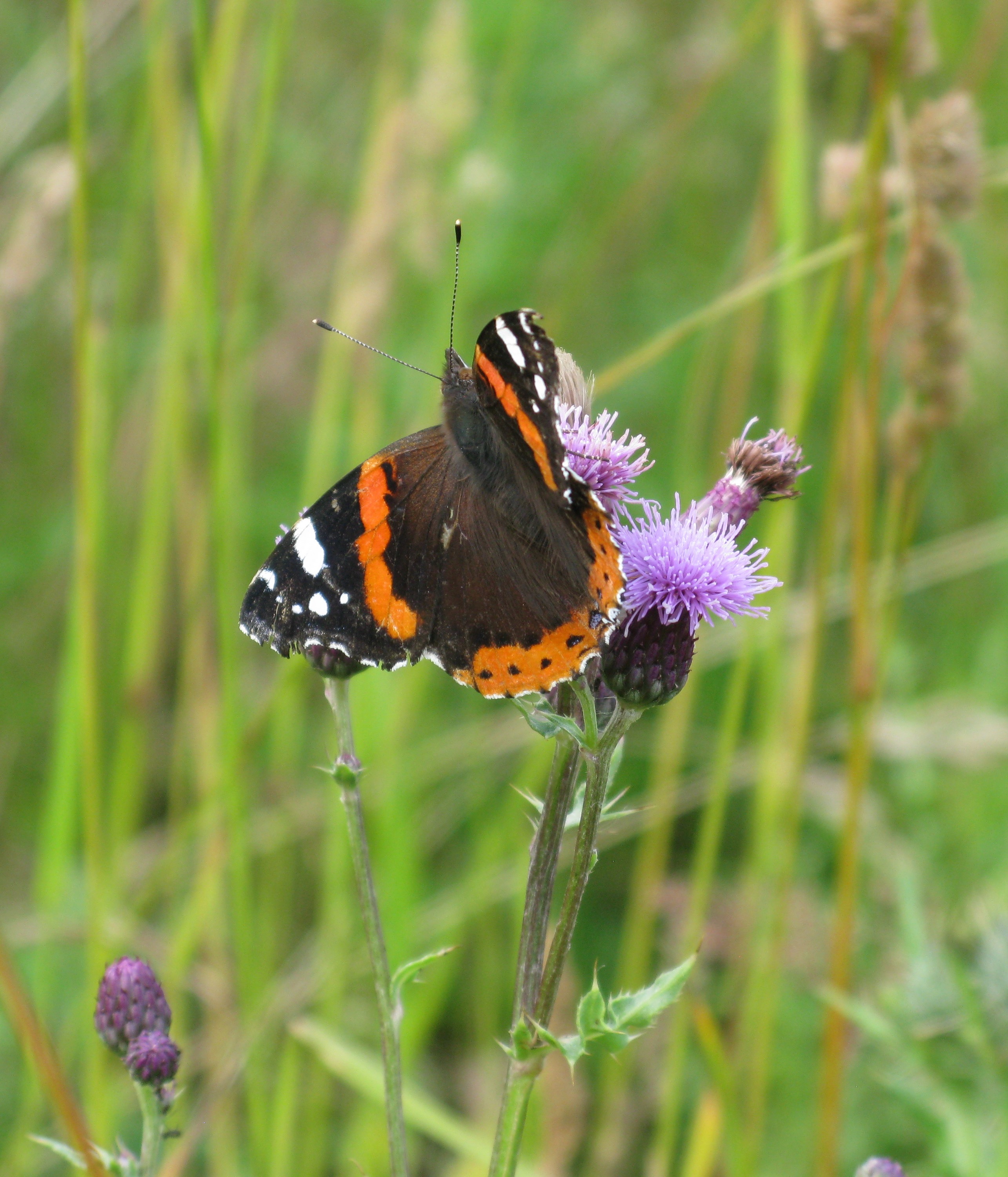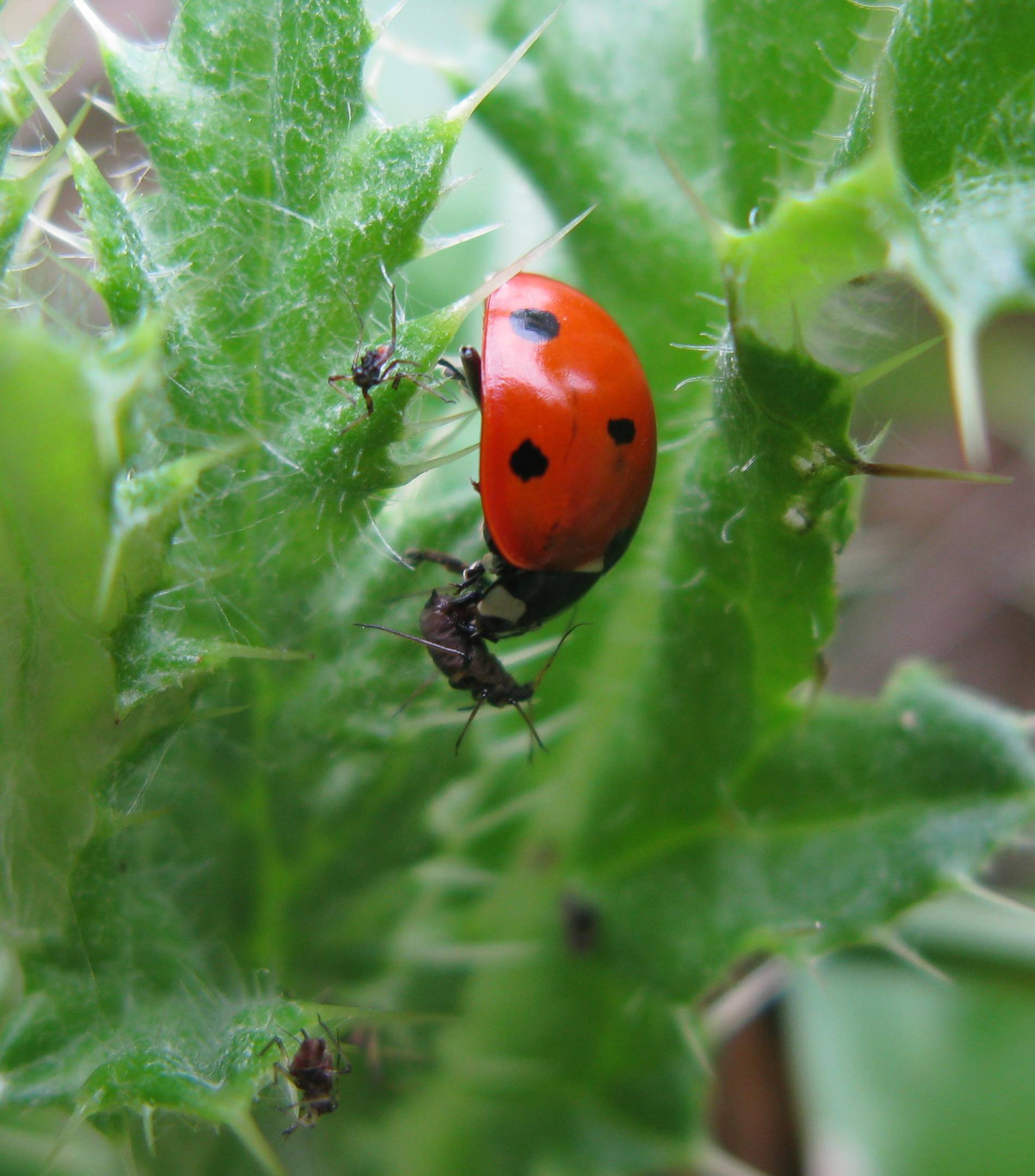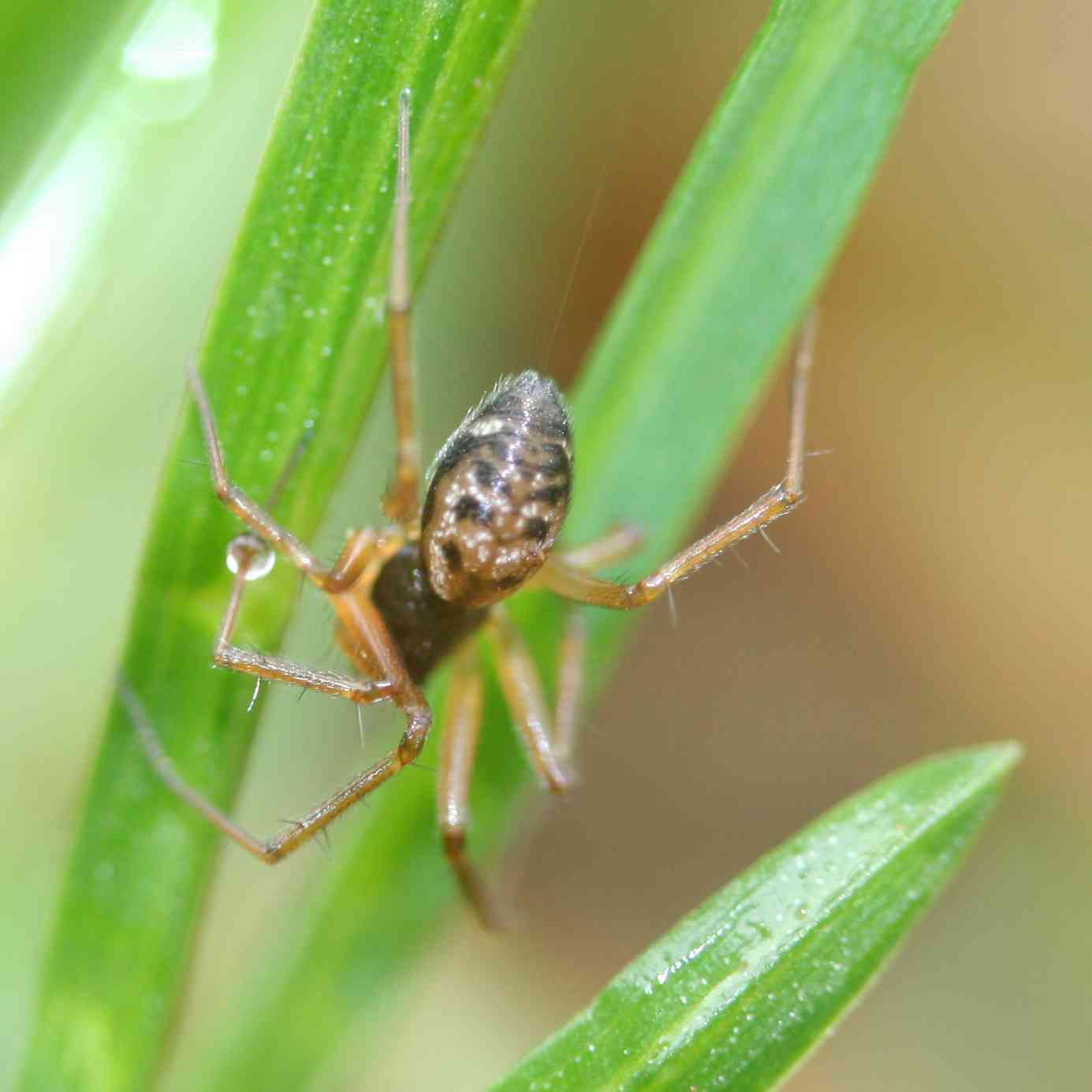Research
Field margins and invertebrate biodiversity
Farmland invertebrates are vital for healthy ecosystem functioning. Many groups have declined due to agricultural intensification. Arable field margins potentially can increase food resources and provide winter refuges for invertebrates. They might also buffer them from agrochemical applications and farm operations. We undertook a series of field and farm-scale experiments which showed the ways in which arable field margins are established and managed can have profound effects on their invertebrate assemblages. Field margin swards established by sowing with a grass and wildflower seed mixture attracted more butterflies than naturally regenerated swards. In the short term, larger and more species-rich invertebrate assemblages were fostered on unmanaged margins than on those managed by cutting. The timing of cutting was critical, with mid-summer cutting having the most persistent, negative effects on invertebrates, while cutting in spring and autumn was generally less damaging and may help maintain sward species richness. Fallowed land (set-aside) configured as blocks rather than margins constituted qualitatively different habitats for invertebrates. Margin width had complex effects on invertebrate abundance and species richness. Boundary hedgerows increased numbers of most invertebrate groups in the adjacent margin. We suggest that blanket management approaches for invertebrates at the farm scale are not optimal. A diverse farmed landscape, with margins of different sizes and different sward structures, will provide for the different ecological requirements of invertebrate populations, and promote their diversity in the characteristically unstable environment of arable systems.
Ruth E. Feber
Paul J. Johnson
Fran H. Tattersall
Will Manley
Barbara Hart
Helen Smith
David W. Macdonald
References
Feber, R.E., Johnson, P.J., Tattersall, F., Manley, W., Hart, B. Smith, H., Macdonald, D.W. (2015) How can field margin management contribute to invertebrate biodiversity? In: Wildlife Conservation on Farmland. Eds: D.W. Macdonald & R.E. Feber. Oxford University Press.
Feber, R.E., Johnson, P.J., Bell, J.R., Chamberlain, D., Firbank, L.G., Fuller, R.J., Manley, W., Mathews, F., Norton, L., Townsend, M., Macdonald, D.W. (2015) Organic farming: Biodiversity impacts can depend on dispersal characteristics and landscape context. PLoS ONE 10(8): e0135921. doi:10.1371/journal.pone.0135921
Vickery, J., Feber, R.E. & Fuller, R.J. (2009) Arable field margins managed for biodiversity conservation: a review of food resource provision for farmland birds. Agriculture, Ecosystems and Environment, 133, 1-13.
Bell, JR, Johnson PJ, Hambler C, Haughton AJ, Smith H, Feber RE, Tattersall FH, Hart BH, Manley W, & Macdonald DW (2002) Manipulating the abundance of Lepthyphantes tenuis (Araneae: Linyphiidae) by field margin management. Agriculture, Ecosystems and Environment 93; 295–304.
Macdonald, D.W., Feber, R.E., Johnson, P.J. & Tattersall, F. (2000). Ecological experiments in farmland conservation. In: The ecological consequences of environmental heterogeneity. Eds. M.J. Hutchings, E.A. John & A.J.A. Stewart. British Ecological Society Symposium. Blackwell Scientific Publications.
Bell, J.R., Gates, S., Haughton, A.J., Macdonald, D.W., Wheater, C.P. & Cullen, W.R. (1999). Pseudoscorpions in field margins: effects of margin age, management and boundary habitats. Journal of Arachnology, 27: 236-240.
Haughton, A.J., Bell, J.R., Gates, S., Johnson, P.J., Macdonald, D.W., Tattersall, F.H. & Hart, B.J. (1999). Methods of increasing invertebrate abundance within field margins. Aspects of Applied Biology, 54:163-170.
Feber, R.E., Smith, H. and Macdonald, D.W. 1999. The importance of spatially variable field margin management for two butterfly species. Aspects of Applied Biology, 54: 155-162.
Smith, H., Feber, R. & Macdonald, D.W. (1999). Sown field margins: why stop at grass? Aspects of Applied Biology, 54: 275-282.
Baines, M., Hambler, C., Johnson, P.J., Macdonald, D.W. & Smith, H.E., (1998). The effects of arable field margin management on the abundance and species richness of Araneae (spiders). Ecography, 21: 74-86.
Gates, S., Feber, R.E., Macdonald, D.W., Hart, B.J., Tattersall, F.H. and Manley, W.J. 1997. Invertebrate populations of field boundaries and set-aside land. Aspects of Applied Biology, 50: 313-322.
Feber, R.E., Smith, H. and Macdonald, D.W. 1996. The effects of management of uncropped edges of arable fields on butterfly abundance. Journal of Applied Ecology, 33: 1191-1205.
Feber, R.E., Johnson, P.J., Smith, H., Baines, M. & Macdonald, D.W. (1995). The effects of arable field margin management on the abundance of beneficial arthropods. In: Integrated crop protection: towards sustainability? (BCPC Symposium Proceedings No. 63). Eds. R. McKinley & D. Atkinson. British Crop Protection Council Publications, Farnham
Feber, R. & Smith, H. (1995) Butterfly conservation on arable farmland. In: Ecology and Conservation of Butterflies (Ed. A. Pullin). Chapman & Hall, London.
Feber, R.E., Smith, H. & Macdonald, D.W. (1994). The effects of field margin restoration on the meadow brown butterfly (Maniola jurtina). In: field margins: integrating agriculture & conservation, Ed. N. Boatman. BCPC Monograph No. 58: 295-300. British Crop Protection Council Publications, Farnham.
Macdonald, D.W. & Smith, H. (1991). New perspectives on agro-ecology: between theory and practice in the agricultural ecosystem. In: The ecology of temperate cereal fields (32nd Symposium of the British Ecological Society), pp. 413-448. Eds. L. Firbank, N. Carter, J.F. Darbyshire & G.R. Potts. Blackwell Scientific Publications, Oxford.
Macdonald, D.W. & Smith, H. (1990). Dispersal, dispersion and conservation in the agricultural ecosystem. In: Species dispersal in agricultural habitats, pp. 18-64. Eds. R.G.H. Bunce & D.C. Howard. Belhaven Press.
Smith, H. & Macdonald, D.W. (1989). Secondary succession on extended arable field margins: its manipulation for wildlife benefit and weed control. In: Brighton Crop Protection Conference – Weeds – 1989, pp. 1063-1068. BCPC Publications, Farnham.
-
 © Ros Shaw
© Ros Shaw -
 © Ros Shaw
© Ros Shaw -
 © James Bell
© James Bell





